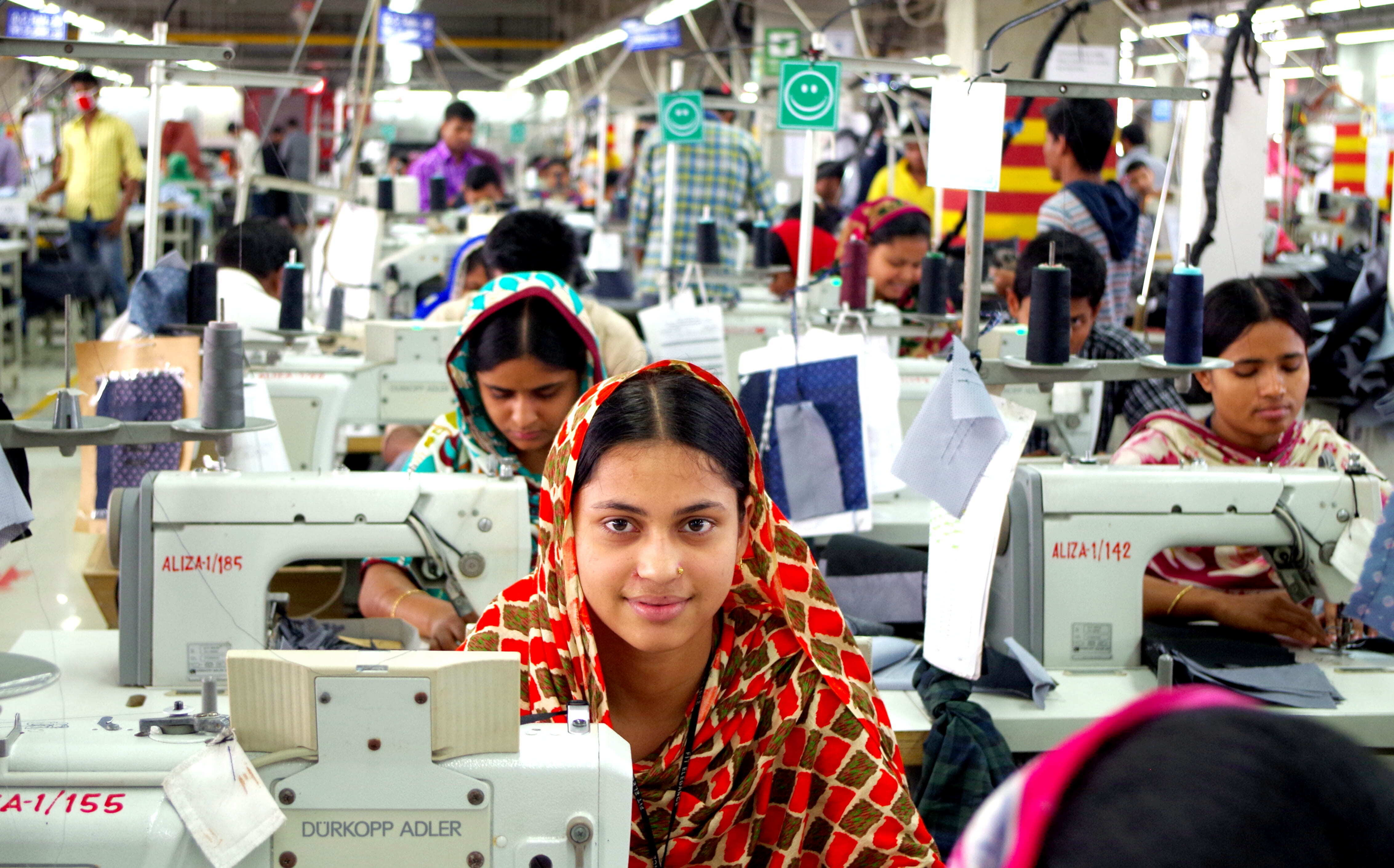How can fashion brands adopt upcycling to be sustainable
Mar 04, 2022
Creativity and hands-on experience to make reuse fashionable: Rossella Dal Poz.
HOW TO ENGAGE YOUR COMPANY IN A POSITIVE CHANGE?
The decision to launch Between Conscious Program is driven by the mission to ease a change in the fashion industry.
BETWEEN consultancy supports the process to focus on values and integrating them into the corporate identity, and to find the best professionals with high-level team scouting.
Sometimes all you needed was some inspiration: Between Conscious Program, therefore, started a journey to show you how diverse can be the range of impactful changes that professionals are able to bring in.
Meet the professionals and discover all the possible routes in the journey to sustainability.
Upcycling, denim and beyond - Rossella Dal Poz
Rossella Dal Poz is a designer and sustainable fashion consultant who started her career working with celebrated brands whose signature products are denim made, such as Replay, Wrangler, 7 for all Mankind, Miss Sixty, Jacob Cohen, and so on.
Twenty years ago she decided to use the experience she had been gaining, to kick off a sustainable brand for the first time. Such a choice was based on a clear mission: giving new life to waste products.
Today we call it upcycling, but it was not easy to get through the misunderstanding and the biases of the industry stakeholders. Now Rossella Dal Poz is highly valued and demanded because of her keen expertise in addressing waste generation and material recovery with a consistent approach that makes creativity pivotal for the projects she joins in.
Second Life
“As a designer, when I used to work with big brands, they were (and still are) constantly carrying on research and development tests on the denim materials (washing and treatment-wise). This is a standard and also the key to these companies’ products' success.
When the collection of a season was finished, the amount of material going to waste fascinated me and made me sad at the same time. Twenty years ago, sustainability was not a prerogative for us designers, but I cared. So, I kept those “failed tests” for myself and started developing my own original designs. It was not well received, at first, but this is how I started to bring upcycling to a professional level. For me, it was kind of part of my DNA.
Beautiful canvas and resistant pieces of fabric destined to be wasted? I could not accept that: they had to have a new life. An example? Once, while visiting a print house that was printing a series of caps for a client of ours, I noticed that the number of wasted hats was huge: discarded due to the littlest dribbling or printing imperfections. They would have just been thrown away if I had not asked to get them all, and later it ended up being a good success for the unique design of the collection that came out. Every piece was one of a kind”.
Upcycling, Circularity, and Sustainability
“When I began with my first upcycling project, it was not a popular concept in fashion, and hardly received in Italy. Now sustainability is extremely popular and with my projects, I go beyond upcycling as I intend to raise awareness about sustainability as a comprehensive concept.
What I conceived for them is completely based on the concept of “reuse”: vintage items, deadstock, unused stocks of fabric… this had to be the starting point. The endpoint had to be a collection of items produced in a sartorial way, serialized (every item has the same fit and overall look), but completely unique because it is obviously slightly different in tone due to the fabric’s dyeing, washing, and so on. Each and every item kind of has its own ID, so that it is possible to track down its “history”, thus giving it more value in the present thanks to its past.
Upcycling can involve pre-consumer pieces (such as waste fabrics or unused textiles) or post-consumer pieces (already worn items): both can be recovered via several channels. I mixed and matched both concepts.
To make my idea of upcycling work at such a scale it was necessary for the ancient tradition of tailoring to meet a contemporary design, respecting the original fabrics with all of their imperfections and deviating details that eventually contributed to the creation of a unique look.
Several magazines, both in Italy and abroad, acknowledged this work for the innovative approach to sustainable fashion (such as Vogue, WWD, WeAR, Sportswear International, and many more), and I am currently working to bring my experience and creative approach to several other brands, too.
The main message to be delivered is that sustainability in the fashion industry is not just about using recycled material or organic cotton in the production process: it is a lifestyle choice that includes worker’s rights, traceability, circularity, and supply chain transparency. That’s the principle and the best possible definition of my belief stands in this quote of the famous Italian writer, Italo Calvino:
“Who are we, who is each one of us, if not a combination of experiences, information, books we have read, things imagined? Each life is an encyclopedia, a library, an inventory of objects, a series of styles, and everything can be constantly shuffled and reordered in every way conceivable”
Creativity Rules
“My approach revolves around two interconnected keywords: creativity and materials.
I push companies to use existing materials in their stock that would otherwise pile up as waste. For whoever does not belong to the industry, the amount of material that goes to waste just because it belongs to an old collection is hard to guess.
Creativity is the key: if you have to work starting from what was previously considered waste, you will of course have few choices. You are not likely to have the perfect colour or textile to bring your idea to life, but you will be forced to find a solution using only what you have: it is a challenge, and challenges trigger creativity. Someone might feel it is like a limitation, but for me, it is further motivation.
Designers’ creativity and talent become way more important in the process. It is impossible to explain how intuition comes to life. It is the ability to put together things during the project stage, pursue an idea that others cannot see, and finally make it work: for example, turning a field jacket into a kimono. That’s why I say that it is at the center of my projects. It is a completely different way to look at the job.
Design: toward innovation
“Sustainability changed design as we knew it: of course, the way to conceive ideas stays the same, but the tools to achieve them in designers’ minds actually changed. Different materials affect what you can do or not with a piece of garment, and that makes all the difference in the world.
I am a designer, but I also had to build expertise in the industry: I had to understand the technology to develop more sustainable designs, and this is part of a process that we might simply call experience.
After all this change, though, it is still hard to make clients understand that the system has changed and different standards are required: collections have to be planned and designed taking more responsibility into account. So it happens that most companies still build merchandising plans, and consequently their collections, following their old habits.
This cannot last forever: brands need to take a stand and find the courage to turn the page. Growing demand for sustainability already comes from the customer base, but companies have the power to get final customers used to such standards, faster.
Hands-on Experience
“When it comes to sustainability, education comes almost exclusively from hands-on experience. I don’t say so just because when I started there were no specific academic courses: but also because sustainable options come from innovative technology in the fields of materials and processes.
In the last two decades, we have been witnessing a wide range of innovations at a faster and faster pace. This means that education in the field of sustainability has to be a life-long learning process.
To understand waste production, I had to study how industrial processes work: this is not the usual academic approach to teaching design, but it was the only way for me to understand that the only possible way to create a real impact on each step of the supply chain can only come by starting from the original design.
But that’s not all. Some new innovative materials, for instance, give us the opportunity to create styles, with the trend that comes along, that only 10 years ago we would have not even been able to imagine.
New technological machines and new dyeing processes also constantly provide us with new opportunities to highly reduce the environmental impact. Ozone garment wash drastically reduces the usage of chemicals and water consumption. Chitosan is a biopolymer obtained from shellfishes which could substitute PVA in the production of textiles, thus reducing not only pollution but also water and energy consumption. Dyeing is being revolutionized by plant-based dyes and pigments obtained from scrap textiles. Even academic institutes would hardly be able to keep up with all that. An open mind is the best learning tool.
A direct link between a designer and the production company improves the opportunities to learn about processes and create a smart and more ethical design accordingly. The role of the factories’ and laundry’s technicians is underestimated: they could contribute way more and could bring improvements in the design process from the beginning.
East and West
“Different markets can require adjustments, but I think that my approach is valid everywhere: sustainability is a global requirement even if the culture of sustainability might grow at a different speed in different countries. As a professional, I had the chance to notice some of the practical effects of such differences.
Working as a consultant for a prestigious Italian brand owned by a Chinese property, I had to deal with a different mindset, because the idea of vintage wasn’t well-conceived, as well. To overcome this cultural gap I reinterpreted and adjourned the style of some old models from the brand archive, also using some deadstock of patches, buttons, and other elements that the Asian property agreed to recognize as distinctive for their own brand.
This is how I got them started with upcycling: for them, it was the first approach to the concept, but many years later some of those items are still part of their collection. I guess that means it worked”.
“A very special thank you to Between Conscious Program for involving me in this project and to promote and ease the fashion industry transition toward sustainability”!

















